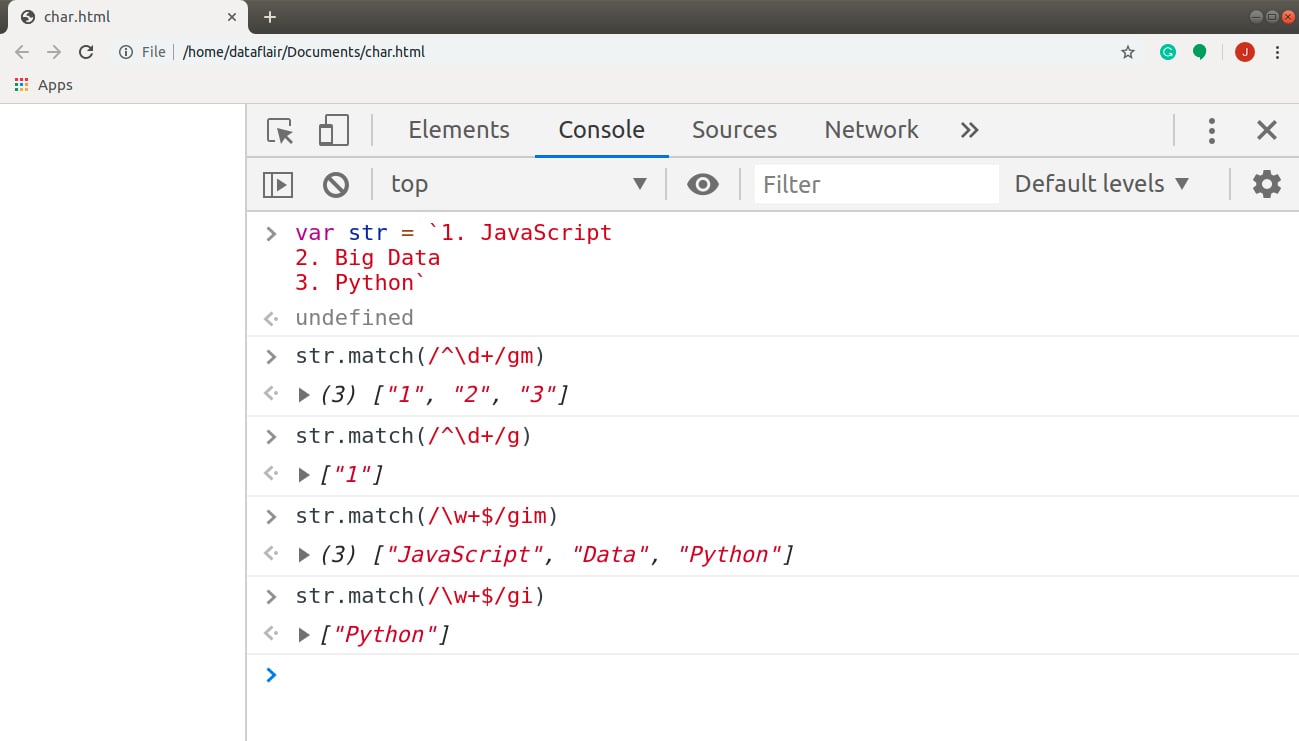


The operator =~ associates the string with the regex match and produces a true value if the regex matched, or false if the regex did not match. In this statement, World is a regex and the // enclosing /World/ tells Perl to search a string for a match. A regex consisting of a word matches any string that contains that word: "Hello World" =~ /World/ # matches The simplest regex is simply a word, or more generally, a string of characters. This page assumes you already know things, like what a "pattern" is, and the basic syntax of using them. This page covers the very basics of understanding, creating and using regular expressions ('regexes') in Perl. Perlrequick - Perl regular expressions quick start #DESCRIPTION

#Regex any character how to
How to give a pattern for new line in grep? New line at beginning, new line at end. Regex to Match Start of Line How do you grep a new line character? When using regular expressions which of the following characters match the beginning of a line?Ģ. This operator is similar to the match-zero-or-more operator except that it repeats the preceding regular expression at least once see section The Match-zero-or-more Operator ( * ), for what it operates on, how some syntax bits affect it, and how Regex backtracks to match it. You cannot change this property directly.0 What does * do in regex? For example, if m is used, ^ and $ change from matching at only the start or end of the entire string to the start or end of any line within the string. The m flag indicates that a multiline input string should be treated as multiple lines. Your example means the match needs to be followed by zero or more characters and then a digit (but again that part isn’t captured).1 What is multiline flag in regex? What it’s saying is that the captured match must be followed by whatever is within the parentheses but that part isn’t captured. ?= is a positive lookahead, a type of zero-width assertion. – match, from beginning to end What does ?= Mean in regex? It changes the interpretation of the ^ and $ language elements so that they match the beginning and end of a line, instead of the beginning and end of the input string.2 What does *$ mean in regex? Multiline option, or the m inline option, enables the regular expression engine to handle an input string that consists of multiple lines. “\n” matches a newline character.0 What is regex multiline? How do you match a new line character in regex? to match really everything, including newlines, you need to enable “dot-matches-all” mode in your regex engine of choice (for example, add re. doesn’t match newline characters, so the matching stops at the end of each logical line. Does include newline in regex?īy default in most regex engines. ) matches any single character except newline \n (same as ). What character in regex is used to match any character except a newline?Ī metacharacter is a symbol with a special meaning inside a regex. We have demonstrated, with a plethora of illustrative examples, how to tackle the Javascript Regex Match Any Character Including Newline problem. (*?) matches any character including newline


 0 kommentar(er)
0 kommentar(er)
